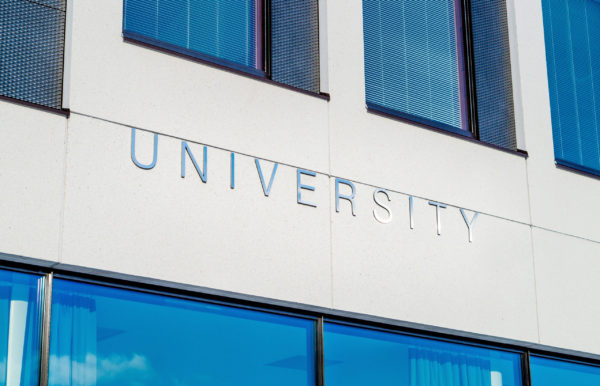
| Date | Author |
|---|---|
| 19th November 2019 | Nick Skelton, SUMS Associate Consultant |
Traditionally, universities have considered capital spend on buildings an investment in the future. New landmark buildings have sprung up on our campuses in the last 20 years. However, as institutions have expanded, we have built on all the car parks – and perhaps some of the playing fields – and are out of space on campus.
In the first in a series on the digital university, Nick Skelton, SUMS Associate Consultant, explores how digital technology and careful thinking about working practices can bring significant efficiencies in space costs.
With campuses full, universities are increasingly renting office space in city centres on the commercial market, at what can be eye-watering rates. When real estate costs fall in the opex budget, it brings the cost of space into even starker relief. A look around many offices – or preferably a formal space utilisation survey – will show that with home working, meetings, etc, staff end up using many desks are only used for a portion of the week.
As a result, some SUMS members have moved professional services staff to agile working, where staff can work at any desk – in their main office, elsewhere on campus, or indeed, at home. Among those adopting this, a ratio of seven desks for 10 people is common, with corresponding savings on space costs.
At the University of Bristol, the whole Senate House was emptied and turned into study and teaching space for students. Professional services staff have relocated to new offices distributed across the city centre, a 10-15-minute walk from the main campus.
To enable the change, Bristol built a digital workplace. A digital workplace is underpinned by a set of communications, collaboration and productivity tools that allow staff to work individually and together, irrespective of their physical work location. This digital environment takes advantage of mobile technologies, improves staff engagement, and enables new, more effective ways of working.
The environment is available for all staff from any computer. Those staff moving to new ways of working also received a new, lightweight laptop to help them work from any location. The ways of working are quite different before and after:
| Before | After |
|
|
|
|
|
|
|
|
You need the right technology to enable this. Microsoft Office 365 is the most common choice, followed by Google GSuite. But as ever the technology is less important than the cultures and practices built around it. Some tips for successful adoption of agile working:
- Open-plan offices need to be equipped to a high standard with informal seating, break out areas, kitchens and social areas as well as desks.
- Don’t impose a rigid one size fits all approach. Some job roles – eg people on the phone most of the day – may not suit this way of working.
- The details really matter – noise, air conditioning quality, etc. You won’t get everything right first time around but make sure you can fix and change things quickly in response to feedback after the move.
- Think about how to maintain team coherence and morale. A system of zoning – where immediate colleagues typically sit in the same area most of the time – may help.
- Provide training to staff before they move to the new way of working, both on the technology and on the cultures and working practices you want to encourage.
- Managers need training on how to manage by results, not attendance. When staff can be working anywhere, managers can find the lack of physical presence in the office every day disconcerting.
- Make sure all meeting rooms are easily bookable through the system. ‘Private’ meeting rooms, hidden away for use of one Managers
- As senior leaders in universities, think about the personal examples you set. When people can work any time, any place, do they feel under pressure to work every time, every place?
- But be careful of blanket bans – “no email after a certain time of day” which deprive staff of the autonomy they need to make decisions that fit their individual lives.
SUMS Consulting is owned by our members and is a specialist in higher education. Our digital consultants are highly experienced, using technology to improve the cultures and working practices of organisations. To learn more about how SUMS Consulting can help you with digital initiatives email us at sums@reading.ac.uk or call us on 0118 378 4304.








